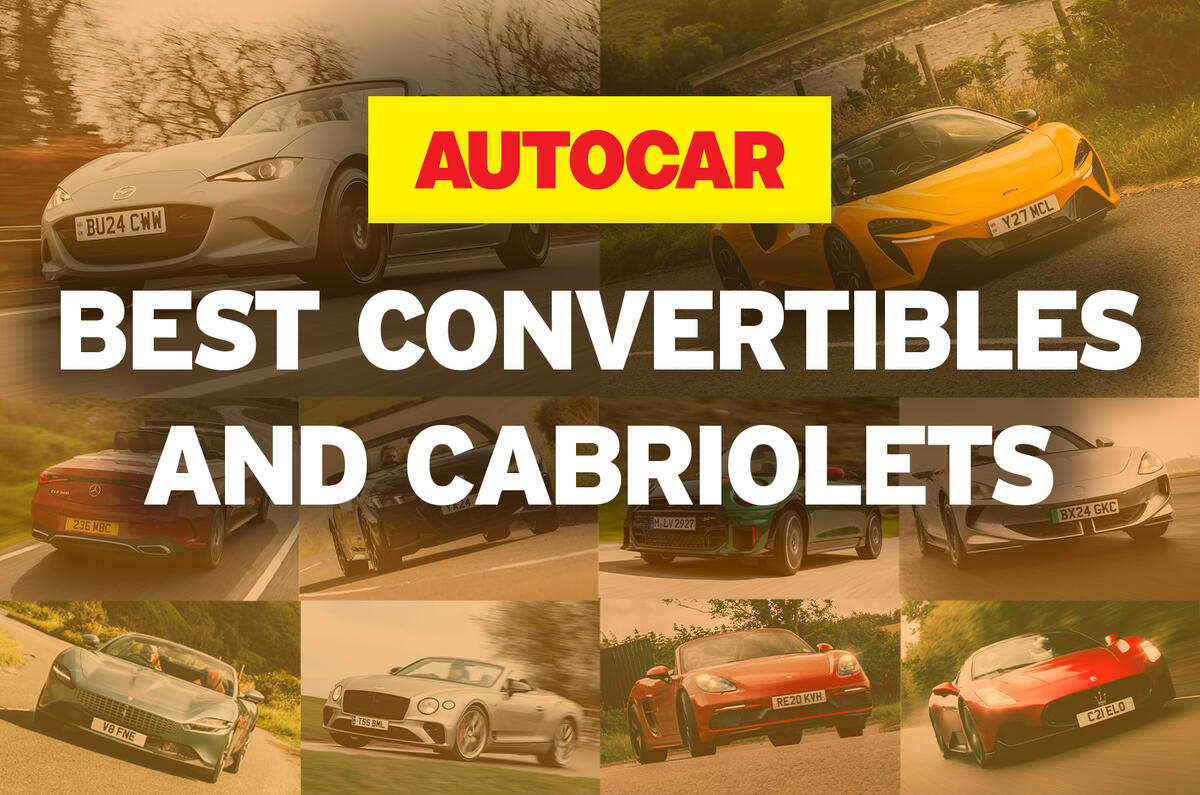Summer is in full swing, and if there's one type of car to enjoy this blistering heat in, it's a convertible or cabriolet.
There's no better way to enjoy a country road at this time of year than with the roof down and this list reveals the best convertibles for maximising your driving pleasure.
The great news is that while the number of available options in other sectors of the car market has fallen over the past few years, the choice of convertibles remains pretty broad. Given the range of open-top sports cars, compact cars, grand tourers, mid-engined supercars and many others besides, nobody in the UK could rightly claim to be starved of options.
Our list covers the full spectrum of convertibles, including cabriolets and roadsters, but all of them share the ability to be used every day. Some are affordable and others are more exotic and expensive – but every one of them is a great way to enjoy the elements.
Each car here can turn the humdrum on an ordinary journey into a moment to savour. If you haven’t experienced open-top motoring before, you really should – and any of these machines would provide an excellent introduction.
Our top pick of convertibles in 2025 is the Mazda MX-5, a well-priced option that is truly enjoyable to drive and own. But which models join it in the top 10? Read on to find out...
Best for: Value for money
There’s a reason why the Mazda MX-5 is the world’s best-selling roadster.
Actually, there are many. Nearly 35 years after the original made its debut, the compact Japanese two-seater continues to serve up affordable driving fun and represents one of the quickest and easiest ways to enjoy good weather at the drop of a hat (or roof).
A large part of the MX-5’s appeal lies in its traditional front-engined, rear-wheel-drive layout, which delivers agile, engaging, throttle-adjustable handling.
Then there’s the fact that it retains largely the same compact footprint as the 1989 original and weighs around 1000kg. Few driver’s cars feel as lithe and right-sized on the road.
It also means that even the entry-level 130bhp 1.5-litre car feels zingy, although the more muscular 181bhp 2.0-litre model gets firmer suspension, a strengthening strut brace and a limited-slip differential.
The MX-5 is pretty much as easy to live with as any Mazda, thanks to its light and precise controls, excellent build quality and low running costs - and its why it's the best convertible on sale today.
Read our Mazda MX-5 review










Join the debate
Add your comment
This article has me dreaming of summer drives in a convertible! Nothing beats enjoying the sun with the top down. It really gets you thinking about what brings joy. On a different note, I recently saw a narcissist test online. Those online psychological tests are always quite fascinating!
In summary, while the Mini Convertible curve rush 2 may not match the sharpness of the standard hatch, it offers a delightful mix of style and driving enjoyment. Its return to Oxford manufacturing and varied performance options enhance its appeal, even as the absence of a manual gearbox and EV variant leaves some enthusiasts wanting more.
This article is spot on! Nothing beats a convertible for enjoying summer drives and those perfect country roads. It's all about maximising pleasure, right? Sometimes after a long drive, I also love to unwind with some casual gaming. That's when I head over to purble place for a bit of fun!